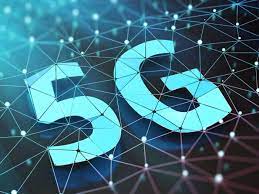In 2021, 5G is the new big thing when it comes to cellphones and other pieces of technology that use data. With how quickly technology advances, it only makes sense to wonder if 5G will be obsolete in a few years. While the future is always uncertain, we can look to some facts about 3G and 4G to make an educated guess as to what the future of 5G holds.

The Difference Between 4G and 5G
4G was first introduced in Norway; however, at the time the service was not a true 4G. Instead, it was more like 3.9G. It was not until about 2011 that “true” 4G data came out, beginning in Canada. The speed was initially around 12.5 Mbps. As of 2021, 4G speeds are closer to 20 Mbps. However, that is about as fast as it can go.
Even though there is a wide array of products that can use 4G (basically anything that uses data), it wasn’t meant to be used for anything. When 4G first came out, it was meant to be used in smartphones. The iPhone 6 was one of the first devices 4G was used for. While 4G worked alright for other devices, it wasn’t built with the same flexibility in mind that 5G was.
5G was first introduced in South Korea in 2019. Since 5G is still relatively new, we only have speculations as to what it will be like when it hits its peak. Initially, experts were hoping that 5G would be twenty times faster than 4G. However, the average speed of 5G in Canada is already over two hundred times faster than 4G! One of the key factors that make 5G so much faster than 4G is its reduced latency.
More devices are supported by 5G than 4G. This is in part because 5G was made with more devices in mind than 4G was. This includes things like smartphones, tablets, and laptops. 5G also has a larger bandwidth on average, ranging from 30 GHz to 300 GHz. All of this also makes it easier for more devices to connect to a 5G network at one time without slowing down speeds as much as it would with a 4G network.
Usage of 3G and 4G in 2021
Very few phones are still using 3G in 2021. As the big cell phone service companies are switching to 5G, they are turning off their 3G networks. Verizon, AT&T, and T-Mobile all plan to shut down their 3G networks sometime in 2022. This shutdown should only affect devices made before 2013 when 4G was becoming popular. For this reason, most people’s service should be fine.
As of 2021, 4G is still the most popular network for cell phones. According to the Cisco Visual Networking Index, about 58 perfect of cell phones are currently using 4G. As time goes on, more phones (especially newer models) are likely to transfer over to 5G.
The Future of 5G and 6G
According to Lifewire, it is likely that 6G will not come out until around 2030. This is about average for a new network to come out, as there is usually a “new G” every ten years or so. Even then, 2030 is the year in which development or early implementation will begin. Because of this, it will probably be even later when the average person has 6G on their phones or other smart devices.
Even though 5G has been around for about two years (as of 2021), it is still being phased in by many of the major cell phone service providers; 4G is still being used regularly throughout the world, and will likely continue to be used for several years to come. Because of all of these things, 5G will continue to be useful (not obsolete) until sometime in the 2030s. 5G monetization will also be popular and profitable during this time.
So, will 5G become obsolete? Like every other network, it will eventually. However, it won’t go obsolete for about another ten years. Because of this, investing in a 5G phone is a great idea if you are looking to update.
